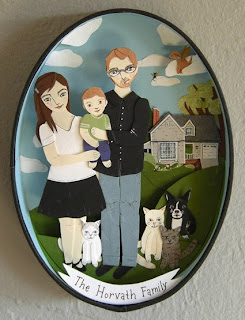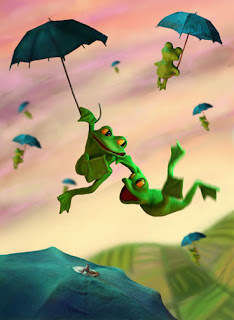How or why did you start working dimensionally?
I have always loved to make things. I'd knit hats for everyone I knew. It was a way to relax between school assignments at art school. So then I came up with ways to incorporate making things for my assignments. Everyone was painting and sketching and I wanted to do that too but maybe knit a little bit on the side. And then it hit me I can.
What or who has influenced the way you work?
So many artists and they are are all so talented. I guess I just wanted it all and this was the best idea I could come up with to show that.
Please describe your working process.
I like to experiment with materials and see what happens. Sometimes something really great happens, other times it just goes to a box under the bed. But usually I will find a material I really want to use or have an idea for a character and see where it takes me. I try and slip some knitting in every time.
What do you the enjoy most / least about working dimensionally?
I get to try new things all the time. It never gets boring and every time you make something it is better than last. I guess that down side is time. There never seems enough of it to make everything you want.
Danielle Buerli
www.dbuerli.com
dbuerli@yahoo.com
All images and content © Danielle Buerli
Danielle Buerli
www.dbuerli.com
dbuerli@yahoo.com
All images and content © Danielle Buerli





















































